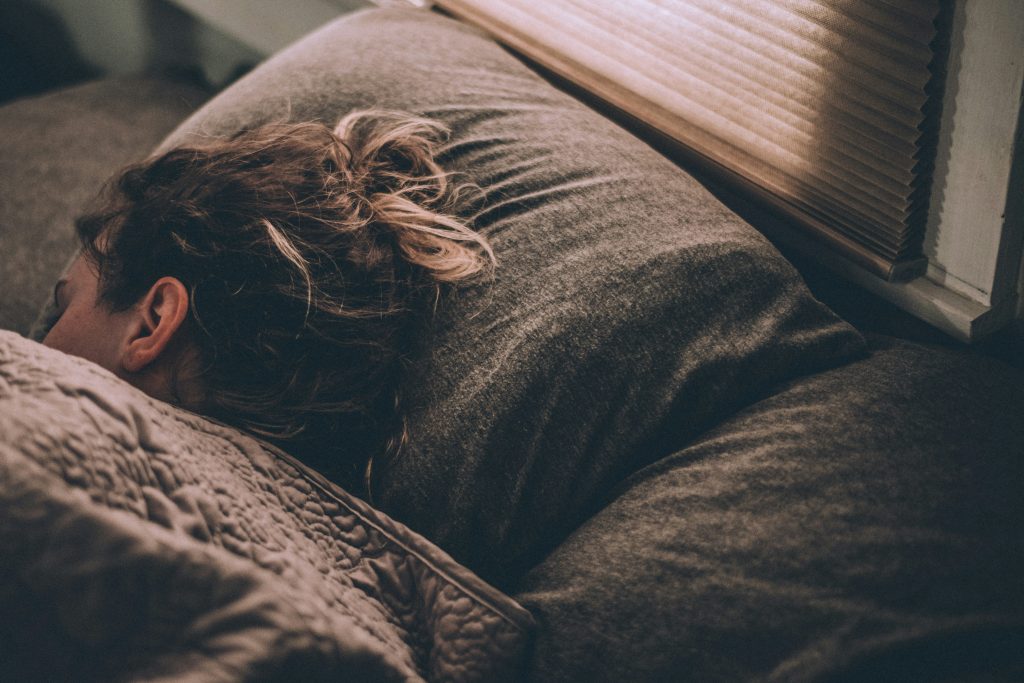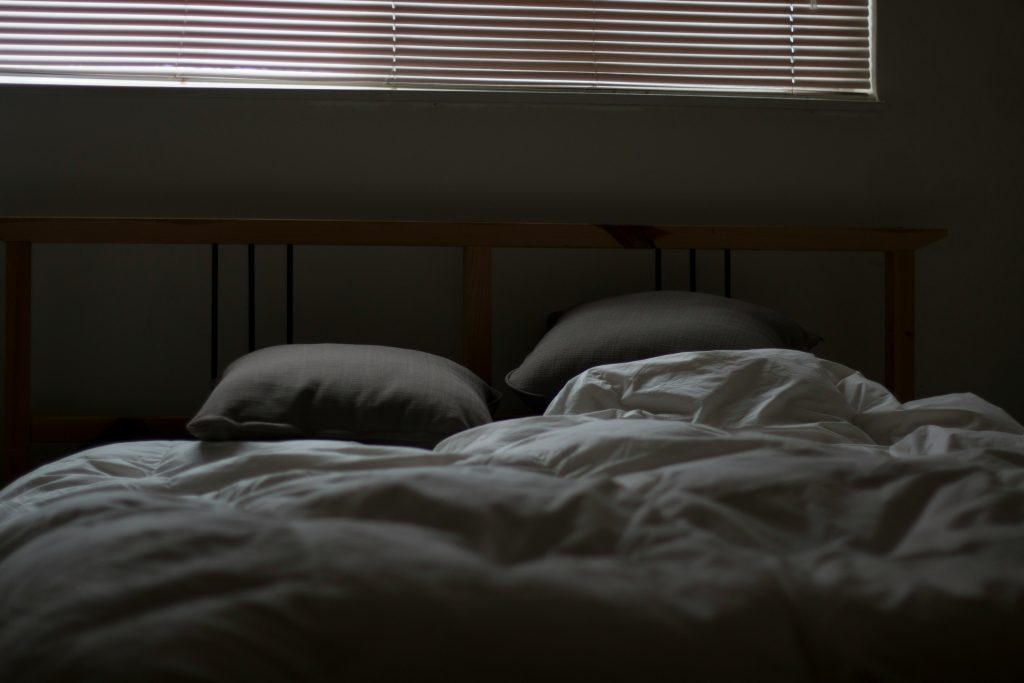Research has long established a bidirectional relationship between sleep and mental health, where poor sleep can exacerbate psychiatric symptoms, and conversely, mental illness often disrupts sleep patterns (Scott et al., 2021; Alvaro et al., 2013).
In individuals with serious mental illness (SMI), including schizophrenia, bipolar disorder, and depression, sleep problems are alarmingly common. Sleep problems have been linked to worsened mental health, higher numbers of suicide attempts, impaired cognitive and socio-occupational functioning, and increased relapse rates. Studies suggest that up to 80% of people with SMI experience significant sleep disturbances, yet clinical attention to and adequate treatment of these issues remain inconsistent (Flint et al., 2022).
Despite guidelines from the National Institute for Health and Care Excellence (NICE) recommending cognitive behavioural therapy for insomnia (CBT-I) as a first-line treatment and growing demand for alternative interventions, pharmacological interventions still predominate (Faulkner et al., 2023).
In addition, poor sleep can lead to increased absenteeism from healthcare appointments and impair memory and adherence to treatment, which can result in higher healthcare costs and longer-term healthcare needs. Thus, in this study, the authors investigated how sleep problems in patients with SMI are recorded in clinical documentation and how these sleep problems are treated in routine practice. Additionally, the effect of sleep problems on attendance rates and patient engagement with the health care system is explored.

Stafford and colleagues (2024) investigated patient health care records to assess documentation and treatment of sleep problems in patients with severe mental illness.
Methods
This cross-sectional study focused on working age adults with SMI and used secondary data from the Cambridgeshire and Peterborough NHS Foundation Trust Research Database (CPFTRD), which includes anonymised medical records from around 260,000 patients. All data was retrieved from documentation that was uploaded between 1st Sep 2021 and 31st Aug 2022.
The authors used code-based searches capturing occurrences of the following keywords: sleep, insomnia, waking, nightmare, apn (apnea), hypersomnia, restless leg, circadian, somnolence, and narcolepsy.
664 patient records were identified and further classified as follows:
- “Poor Sleep” following explicit mention of current sleep problems (n=203),
- “Good Sleep” following explicit mention of sleep being optimal (n=68),
- Excluded if mentions of sleep were inconsistent or irrelevant (n=393).
91 patient records (65 Poor Sleep and 26 Good Sleep) had sufficient attendance data and were used to answer exploratory questions. Descriptions of sleep problems were categorised as none, minimal, adequate, or good based on whether or not cause, perceive effect, sleep patterns, average hours of daily sleep and/or specific sleep disorder were described.
Results
First, 203 patient records with Poor Sleep were analysed. The mean age of the sample was 40 years (SD=13.35), with 60% of female and 59% identifying as White British. 31% had been admitted to inpatient services for part of the study period, spending an average of 42% of their time in inpatient settings. The most common diagnosis was schizophrenia/psychosis (21%), followed by bipolar disorder (13%) and depression (5%).
How are sleep problems in SMI patients recorded in clinical documentation?
Causes of sleep problems were described in 28% of records, average hours of daily sleep in 19% and specific sleep disorders in 13%. However, of the 203 records, 37% contained no descriptions of sleep problems, 47% had minimal descriptions, 25% adequate descriptions, and only 1% had good descriptions.
How are sleep problems in SMI patients treated in routine practice?
“Recommended treatments”, namely sleep hygiene advice and CBT-I as first-line treatment, with adjacent short-term medication offered if required, vs “non-recommended treatments” were determined based on the 2022 NICE guidelines for chronic insomnia.
- 57% of patient records contained no mention of sleep treatment being offered.
- 34% of patients were offered non-recommended treatments, of which 75% were offered a recommended sleep medication (including Melatonin, Zopiclone, Zolpidem, or Promethazine) but not adjacent to CBT-I, 22% were offered a non-recommended medications (assumed when no mention of medication name), and 20% were offered limited aspects of sleep hygiene advice.
- Only 9% were offered recommended treatments, including 4 patients offered CBT-I, 14 patients offered sleep hygiene advice, and 1 patient receiving specialist support.
- Post-hoc analyses identified a significant difference in the type of treatment offered based on inpatient status, where more outpatients (64%) were offered no treatments compared to inpatients (41%). However, more inpatients (52%) were offered non-recommended treatments compared to outpatients (26%).
Then, 91 patient records (Mean age = 41, SD=13.22; 71% female, 56% White British; 24% admitted as inpatient for part of the study period) with confirmed sleep status (65 Poor Sleep and 26 Good Sleep) and sufficient attendance data were used for the following exploratory analyses:
Does SMI patients’ sleep affect their attendance rates?
There was no difference in attendance rates between Poor Sleep and Good Sleep. Both groups attended an average of 87% of appointments over the study period.
Are SMI patients with sleep problems scheduled more appointments than SMI patients with good sleep?
There was no difference in the number of appointments scheduled between Poor Sleep and Good Sleep. Poor Sleep patients were scheduled to 18 appointments on average, while Good Sleep patients were scheduled to 17 appointments on average over the study period.

Using a code-based search of secondary clinical data, authors determined that only 9% of patients were offered recommended treatments for sleep problems. In addition, 57% of records had no mentions of sleep treatments being offered.
Conclusions
In conclusion, Stafford and colleagues highlighted the lack of routine clinical attention to sleep assessment and treatment in patients with severe mental illness, in addition to frequent non-guideline supported treatments being offered where sleep is addressed.
While sleep quality did not influence clinic attendance rate in this population, incorporation of routine sleep assessment into clinical practice, the adoption of specific and standardised sleep questionnaires, and appropriate staff training would improve patients’ outcomes and help refine pathways to appropriate sleep treatment.

Stafford and colleagues advocate for the incorporation of routine assessment of sleep into clinical practice within mental health services, such as administration of standardised outcome measure upon acceptance of referral.
Strengths and limitations
One of the main strengths of this study is its use of real-world clinical data from routine patient records. Unlike survey-based research, which may suffer from selection bias (e.g., clinicians interested in sleep being more willing to participate than others), here the authors capture unbiased and current clinical practices of assessment and treatment of sleep problems across a broad patient population.
The findings align with previous research, reinforcing their validity and highlighting the widespread neglect of sleep in mental health care (Mindell et al., 2011). In addition, by referencing NICE guidelines, the study provides a clear benchmark for evaluating clinical practices, identifying gaps in adherence, and suggesting areas for improvement.
However, while using clinical records offers some advantages, it could also represent a limitation, especially where retrospective records might be incomplete or inconsistently documented. This was especially the case concerning adherence outcomes that were only sparsely recorded. As sleep problems are not routinely documented, the available data may underrepresent the true prevalence of sleep problems in patients with SMI. In addition, as authors excluded free-text clinical notes, key details such as sleep disturbances reported from the patients directly, or clinician decision-making processes to recommend a specific treatment, were not accessible. This may have hindered analyses of how and why sleep problems were or were not addressed.

This study highlights the lack of routine clinical attention to sleep assessment and treatment in patients with severe mental illness, despite the very high prevalence of sleep problems in this population.
Implications for practice
A series of implications for practice can be derived from this study.
Need for standardised sleep assessment
The authors highlight the need for routine assessment of sleep problems to be integrated into secondary mental health services. The use of validated assessment tools, such as the Insomnia Severity Index (ISI), the Pittsburgh Sleep Quality Index (PSQI) or the Sleep Condition Indicator (SCI) would ensure consistency in identifying sleep problems.
Additionally, incorporating these standardised sleep questionnaires into routine documentation would help improve care plans by allowing early detection and intervention. Policies should also be reviewed to ensure they align with best practices for sleep assessment and treatment.
Clinician training and awareness
Many sleep disorders other than insomnia and obstructive sleep apnoea, (e.g., circadian rhythm disorders, hypersomnia, or restless leg syndrome) remain under-diagnosed. Therefore, targeted training programs aiming to enhance clinician’s understanding of sleep disorders and their impact on mental health are warranted. Emphasis on identification and differentiation of these conditions, as well as training on interventions recommended by guidelines and other evidence-based approaches.
Improved access to evidence-based treatments
Mental health services should expand access to first-line treatments such as CBT-I, which is often under-utilised despite its proven effectiveness. This could be achieved by training existing staff in CBT-I delivery or developing referral pathways to sleep specialists.
Sleep hygiene advice should also be tailored to individual patient needs and followed up regularly rather than given as a generic, one-time intervention.
Additionally, pharmacological treatments should be prescribed in accordance with NICE guidelines, with minimal reliance on over-the-counter sleep aids or non-recommended medications.
Multidisciplinary care
There is a need for clearer guidelines on who is responsible for assessing and treating sleep disorders within mental health services. Current inconsistencies in treatment practices suggest that many clinicians are either unaware of their role in sleep management or unsure of where best to refer patients. Encouraging collaboration between psychiatrists, psychologists, general practitioners, and sleep specialists can ensure that patients receive comprehensive and personalized care.

The authors emphasize the importance of information about sleep being readily available, easily accessible, and routinely updated for every patient, to maximise pathways to appropriate sleep treatment.
Statement of interests
No conflict of interests to declare.
Links
Primary paper
Stafford A., Oduola S., & Reeve S. How sleep in patients with serious mental illness is recorded and treated, and its impact on service engagement. Sleep Medicine (2024) 124:58-69, doi: https://doi.org/10.1016/j.sleep.2024.09.002
Other references
Alvaro P.K., Roberts R.M., & Harris J.K. A systematic review assessing bidirectionality between sleep disturbances, anxiety and depression. Sleep (2013) 36(7):1059-1068, doi: https://doi.org/10.5665/sleep.2810
Faulkner S.M., Drak R.J., Eisner E., & Bee P.E. Sleep problems and referral intentions in mental health services: service user self-report and staff proxy report surveys. BMC Psychiatry (2023) 23:583, doi: https://doi.org/10.1186/s12888-023-04817-6
Flint T., Hennion V., Etain B., & Scott J. Do clinical guidelines for bipolar disorders adequately address sleep, circadian rhythm, activity and lifestyle problems? Journal of Affective Disorders (2022) 301:433-436, doi: https://doi.org/10.1016/j.jad.2022.01.060
Mindell J. A., Bartle A., Wahab N. A., Ahn Y., Ramamurthy M. B., Huong H. T., Kohyama J., Ruangdaraganon N., Sekartini R., Teng A., & Goh D. Y. Sleep education in medical school curriculum: a glimpse across countries. Sleep medicine (2011) 12(9):928–931, doi: https://doi.org/10.1016/j.sleep.2011.07.001
Scott J., Kallestad H., Vedaa O., Siversten B., & Etain B. Sleep disturbances and first onset of major mental disorders in adolescence and early adulthood: A systematic review and meta-analysis. Sleep Medicine Reviews (2021) 57-101429 doi: https://doi.org/10.1016/j.smrv.2021.101429